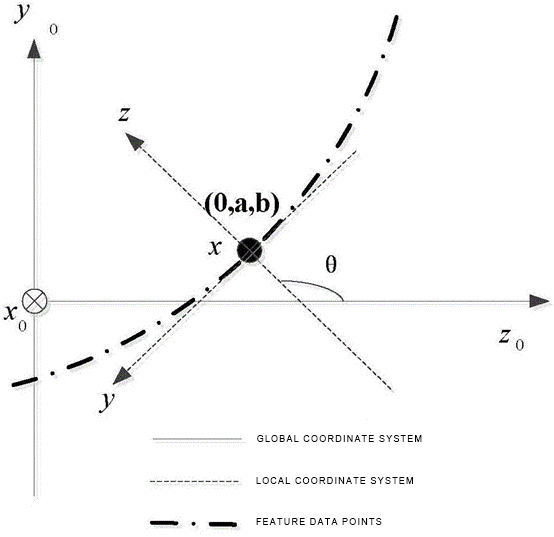Aspheric design offers greater degrees of freedom, allowing for better aberration correction. The application of aspheric surfaces adds many degrees of freedom to off-axis optical systems. However, compared to traditional optical systems, the design of off-axis aspheric systems is much more challenging. Therefore, finding effective design methods for off-axis aspheric systems is a key concern for designers.

A design method for an off-axis aspheric optical system includes the following steps:
Step S1: Establish an initial system that includes multiple initial surfaces. One initial surface in this initial system corresponds to a surface in the off-axis aspheric optical system to be designed. Define one aspheric surface to be determined in the off-axis aspheric optical system as aspheric surface a, and another as aspheric surface b. Select K characteristic rays Ri (i = 1, 2, … K) from different fields of view and different apertures.
Step S2: Keep the multiple initial surfaces unchanged. According to the object-image relationship and Snell’s law, solve for m characteristic data points (P1, P2, … Pm) on aspherical lenses surface a point by point, where m < K. Fit these m characteristic data points (P1, P2, … Pm) to obtain the initial off-axis aspheric surface Am.
Step S3: Based on the initial off-axis aspheric surface Am, introduce an intermediate point Gm to solve for the (m+1)th characteristic data point Pm+1. Fit the m+1 characteristic data points (P1, P2, … Pm+1) to obtain the off-axis aspheric surface Am+1. Based on the off-axis aspheric surface Am+1, introduce an intermediate point Gm+1 to solve for the (m+2)th characteristic data point Pm+2. Fit the m+2 characteristic data points (P1, P2, … Pm+2) to obtain the off-axis aspheric surface Am+2. Repeat this process of solving for intermediate points, solving for characteristic data points, and fitting the aspheric surface until the Kth characteristic data point PK is obtained. Fit the K characteristic data points (P1, P2, … PK) to obtain the off-axis aspheric surface AK, which is aspheric surface a.
Step S4: Keep aspheric surface a and the initial surfaces other than those corresponding to aspheric surface b unchanged. First, according to the object-image relationship and Snell’s law, solve for m characteristic data points (P’1, P’2, … P’m) on aspheric surface b point by point, where m < K. Fit these m characteristic data points (P’1, P’2, … P’m) to obtain the initial off-axis aspheric surface A’m.
Step S5: Based on the initial off-axis aspheric surface A’m, introduce an intermediate point G’m to solve for the (m+1)th characteristic data point P’m+1. Fit the m+1 characteristic data points (P’1, P’2, … P’m+1) to obtain the off-axis aspheric surface A’m+1. Based on the off-axis aspheric surface A’m+1, introduce an intermediate point G’m+1 to solve for the (m+2)th characteristic data point P’m+2. Fit the m+2 characteristic data points (P’1, P’2, … P’m+2) to obtain the off-axis aspheric surface A’m+2. Repeat this process of solving for intermediate points, solving for characteristic data points, and fitting the aspheric surface until the Kth characteristic data point P’K is obtained. Fit the K characteristic data points (P’1, P’2, … P’K) to obtain the off-axis aspheric surface A’K, which is aspheric surface b.
Step S6: Repeat the above steps until all aspheric surfaces to be determined in the off-axis aspheric optical system are obtained, resulting in the off-axis aspheric optical system.
Compared to existing technologies, the design method for aspheric off axis mirrors optical systems based on point-by-point construction provided by this invention is suitable for the design of off-axis aspheric optical systems with multiple fields of view and certain aperture sizes by controlling characteristic rays from multiple fields of view and different aperture positions. The number of fields of view and apertures in the system is not limited, offering broad application prospects.